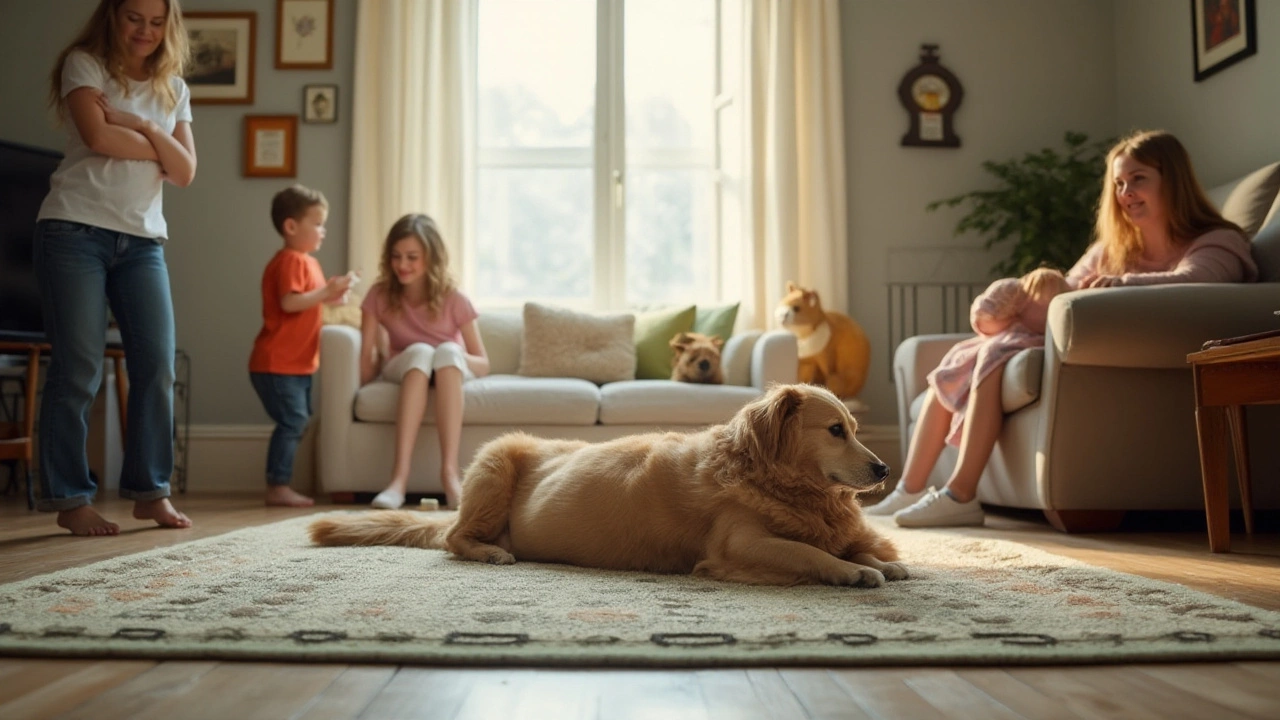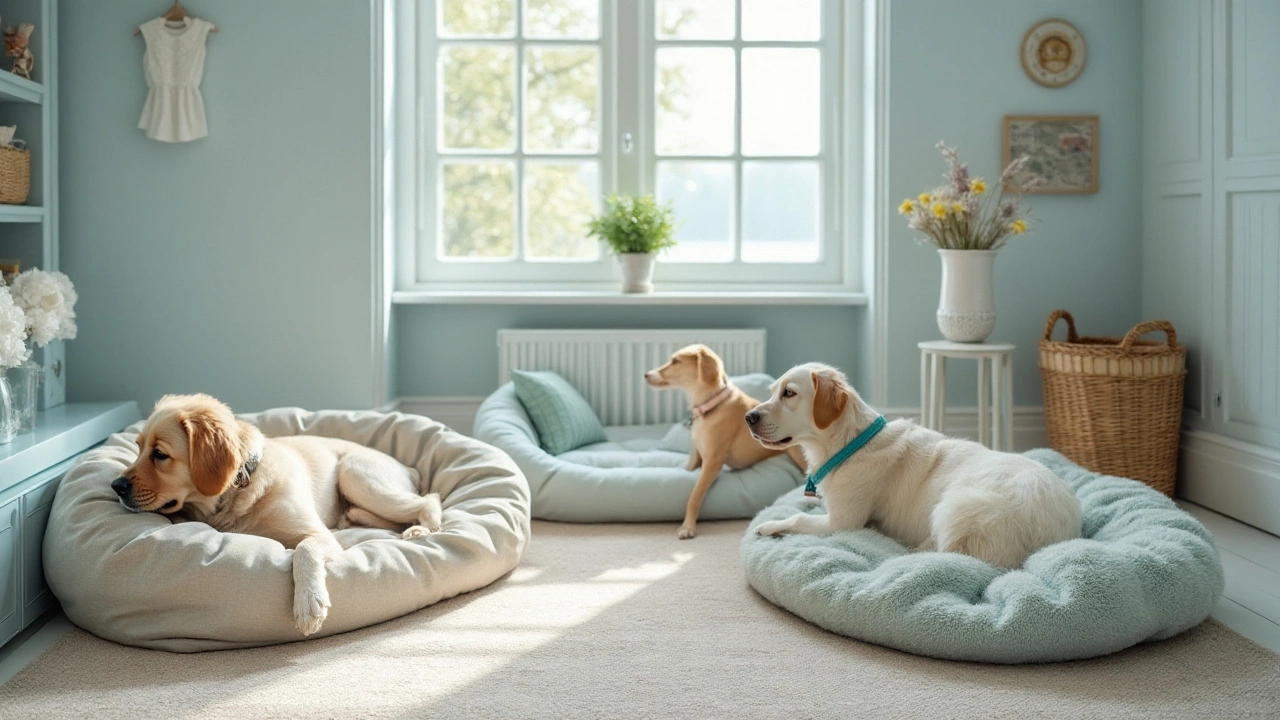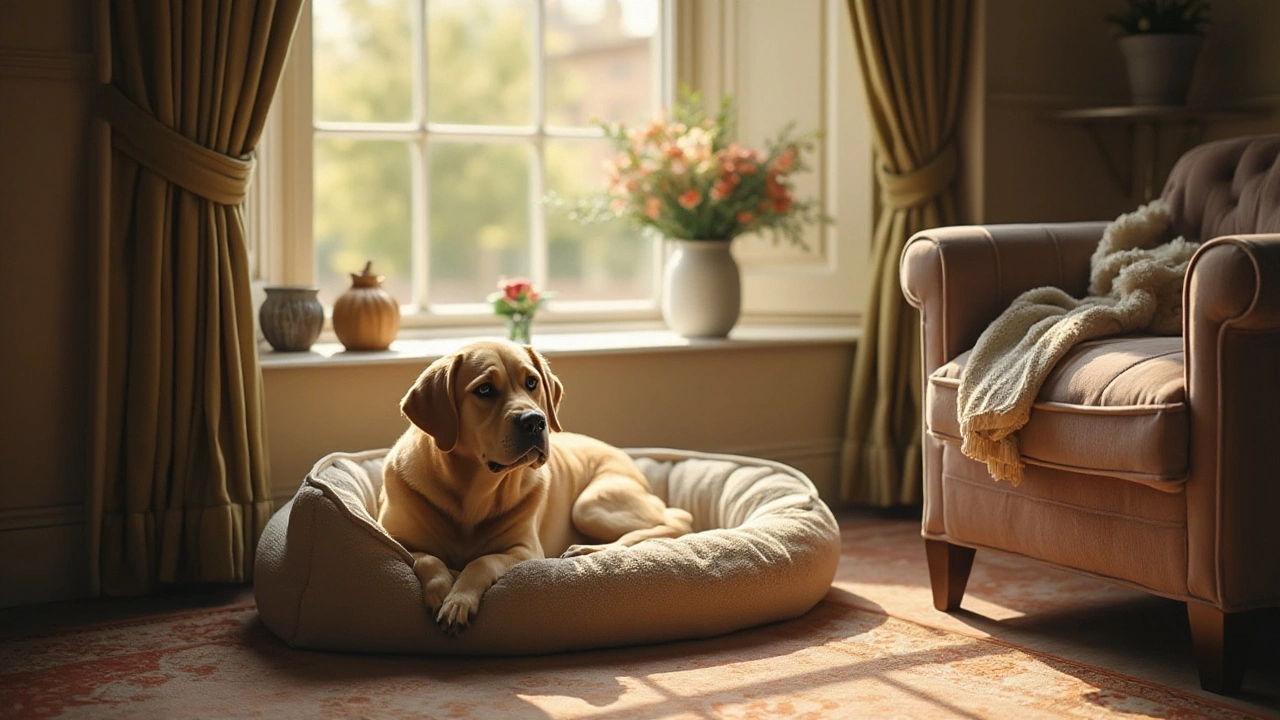When it comes to deciding where to put your dog’s bed, it’s not just about finding an empty corner or fitting it into the room's decor. Your dog's bed placement can significantly influence their comfort and well-being, impacting their sleep and, by extension, their daily mood.
Dogs, much like humans, have preferences and needs that, when met, can improve the quality of their rest. By carefully observing where your dog tends to relax during the day, or how they respond to various locations in the house, you can provide them a cozy space that they eagerly return to, ensuring they're well-rested and happy.
- Understanding Your Dog's Needs
- Ideal Locations in the Home
- Factors to Consider
- Tips for Maintaining the Area
Understanding Your Dog's Needs
Understanding your dog's needs is the first and most crucial step to ensuring their bed is in the right spot. Dogs are diverse in their preferences and behaviors, much like humans. Depending on their breed, age, health condition, and personality, their comfort levels may vary significantly. For instance, a senior dog might prefer a warm, quiet corner away from family hustle, while a young pup might relish being in the heart of all the activity. Recognizing these needs is essential in placing their bed correctly. This involves a bit of observation and trial-and-error to truly comprehend what your dog enjoys the most in their resting area.
Some dogs might be naturally drawn toward the warmth of the sunlit side of the house, while others might prefer the cool shade. Temperature can play a significant role in where your dog feels most comfortable resting. Keeping an eye on where your dog chooses to relax at various times of the day can provide valuable insights into their temperature preferences. Noise levels are another aspect worth considering. Dogs have keen hearing, and a location away from loud appliances or busy streets might prove more conducive to restful sleep for some canines.
Behavioral characteristics should not be overlooked when investigating your dog's resting needs. An anxious dog might benefit from a location that feels like a 'safe haven,' where they are surrounded by familiar objects that smell like you. This not only acts as a comfort for your pet but also strengthens their sense of security. A confident dog might enjoy the social aspect of being closer to where family activities are taking place, allowing them to stay engaged with their human companions. Finding this balance between social interaction and a comforting retreat is crucial for a harmonious home environment.
An interesting fact is that dogs sleep around 12 to 14 hours a day, with puppies and older dogs snoozing even more. Given this significant amount of time spent resting, ensuring they have the perfect bed location is not only a matter of comfort; it's a cornerstone of their health and well-being. Bearing this in mind, your dog bed placement should facilitate not just sleep, but rejuvenation. Dog bed placement is an integral part of their routine, influencing their mood and energy levels when they wake. Trust your instincts, paired with the observation of your canine's habits, will guide you to make the right decision.
"Dog owners should aim to make their pets feel involved in the household yet offer a space where they can retreat," says Dr. Julie Buzby, DVM, an expert in canine behavior. "Finding that balance is key to ensuring your dog's emotional stability."
In summary, understanding your dog's needs is a multi-faceted task that involves looking at their behavior, environmental preferences, and health conditions. Each factor contributes to identifying the best location in your home for their bed. It's not just about where they get a little shut-eye but where they feel truly at home. By keeping a keen eye on their preferences and being willing to adjust as necessary, you'll be able to provide an optimal sleeping environment tailored to your dog's unique needs.

Ideal Locations in the Home
Finding the perfect spot for your dog bed can feel a bit like solving a puzzle. You want your furry friend to feel safe, relaxed, and part of the family. A spot that works well is often close to family activity but not directly in the center of the chaos. Many dogs enjoy being near where the action happens but also need a space to retreat to when they feel overwhelmed. Look for areas where the noise is consistent but not too loud. Bedrooms often work well as they can be quieter during the day, giving your dog a chance to nap without interruption. Placing the dog bed somewhere with a good view of the room can also comfort some dogs, as they like to keep an eye on things.
Temperature is another big factor. Dogs, especially those with thick fur, can get hot easily. Placing their bed near a radiator or in direct sunlight might not be the best choice. Instead, look for a spot with good airflow to help them stay cool. This is particularly important in warmer climates or if your dog likes to sprawl out rather than curling up. Since many living rooms naturally have areas that are less sunny and have space for a breeze, these often become good choices. Keep in mind, though, that drafts can be uncomfortable, so avoid placing the bed directly in the line of a doorway. Creating a balance in temperature is key in picking the right place.
Safety should also play a role in your decision. For puppies or older dogs, a cushioned but non-slip surface is important to prevent injury. Places like kitchens or utility areas with hard surfaces can be less ideal unless there's enough non-slip cushioning. According to veterinarians, ensuring your pet is in a safe, stable environment can minimize anxiety and improve quality of life. Consider adding a rug or mat under the dog bed to enhance grip and comfort. It's these little things that can make a world of difference to your pet's day-to-day happiness.
Placing a dog bed near an outlet prone to curious chews isn’t very safe either, especially with electric cords dragging across the floor. Instead, the base of a staircase or under a table can offer cozy nooks, especially for smaller breeds. This positioning not only adds an element of safety but it's also aesthetically pleasing, blending naturally into your living space. Although avoiding clutter is aesthetic advice, it doubles as a health tip; a tidy environment can help your dog's mental health, giving them clarity and security of their own personal space.
Lastly, you'll want to consider the social aspect. Dogs are remarkably social creatures. Having the bed within an area where family gatherings frequently take place allows them to feel involved and included without being underfoot. Dogs generally thrive on companionship and being near their human family members can result in a calmer and more content pet. Placing the dog bed in a corner of the living room or family room gives them this sense of belonging while still offering a personal retreat. As Dr. Sarah Turner, a renowned veterinarian, notes, "Dogs find comfort in spaces where they can observe yet are sheltered from undue stress."

Factors to Consider
Choosing the perfect spot for your dog's bed isn't as simple as it seems. There are several factors you should consider to ensure your furry friend gets the best rest possible. To start, think about the temperature of the room. Dogs are sensitive to extreme temperatures, and placing their bed near a heating vent or in direct sunlight could make them uncomfortable. On the other hand, avoid spots that might be too drafty in the winter. Dogs, like humans, usually prefer a moderately warm location, which can help them feel safe and snug.
Noise levels are another crucial aspect to consider when placing your dog's bed. Dogs have much sharper hearing than humans, and a bed near a frequently used TV or a busy street might keep them awake or make them restless. Pay attention to where your dog tends to lay down during the day. If they often retreat to quiet corners of the house, follow their lead; they might be telling you they prefer less noise for their naps.
Traffic and activity around the house also play an important role in determining the best dog bed placement. If your dog's bed is placed in a high-traffic area, it might not only disrupt their sleep but also cause unnecessary stress due to constant foot traffic. While some dogs enjoy being near the hustle and bustle of family life, many prefer a balance of being near family activity without being submerged in it. A semi-quiet location allows them to feel part of the family while still offering them the rest they need.
According to the American Kennel Club, "giving your dog the freedom to choose where to sleep is paramount in helping them find a peaceful spot of their own."
The age and health of your dog are equally important. Puppies and senior dogs may need extra consideration. They generally require warmth and proximity to the family for comfort and reassurance. An older dog might have mobility issues, so placing their bed near stairs or in hard-to-reach areas could pose a problem. Ensure their bed is accessible, especially if they have a larger frame or face health challenges.
If you have more than one pet, ensure each has a designated sleeping spot. This helps prevent territorial disputes and ensures peace in your household. Dogs appreciate having their own territory – it makes them feel secure. If you're squeezing multiple beds into the same area, make sure there's ample room between them to maintain harmony. A good option might be to place beds in corners or separate rooms, if possible.
Another factor is how often you need to clean the area where the bed is located. Dogs bring dirt and hair wherever they settle, so ensuring the area is easy to vacuum or mop is essential. Choose a spot that doesn't require constant rearranging of furniture to clean effectively. If your dog has allergies or you like a tidy home, this practicality can be a priority.

Tips for Maintaining the Area
Once you've chosen the perfect spot for your dog's bed, it’s vital to maintain this area, ensuring it remains a clean and welcoming haven for your pooch. Regular upkeep not only prolongs the life of the bed but also contributes to your dog's health and comfort. One essential habit is to clean the bed cover frequently. Many pet beds come with removable covers which can be machine washed. Aim to wash these at least once every two weeks or more frequently if your dog sheds heavily or gets dirty often. This prevents the buildup of fur, dander, and odors that might discourage your dog from using the bed.
Keeping the space around the bed tidy is equally important. Dogs often carry small bits of nature in their fur, from leaves to tiny twigs, which can accumulate around their sleeping area. Regularly vacuuming or sweeping the area can prevent these from piling up and causing discomfort. Also, ensure the spot isn’t susceptible to drafts or extreme temperatures, as your pet’s comfort hinges on consistent warmth or coolness, depending on their breed and coat type. A drafty corner can make a dog feel uneasy, while a location close to a heater could overheat them, especially during the warmer months.
It's helpful to have a little basket or container nearby to store a few of your dog’s favorite toys. This helps establish their bed as a familiar and comforting place, filled with objects they love. Rotate these toys regularly to keep their interest piqued, ensuring they associate the bed with positive, calming experiences. Additionally, if your dog has special needs or is aging, consider placing orthopedic cushions or pads on their bed, as these can help with joint pain or discomfort. Keeping an eye on your dog’s behavior and making small adjustments based on their preferences can make a big difference.
For households with multiple pets, especially cats, ensure your dog's bed remains a zone free of conflict. It's not uncommon for other pets to encroach on this space, leading to territorial disputes. Careful placement away from active house traffic or noisy household appliances is crucial. "Dogs are creatures of habit," says Dr. Mark Stevens, a renowned veterinarian,
"so maintaining a consistent, peaceful environment can do wonders for their overall sleep quality and emotional well-being."With these maintenance tips, your dog's bed will remain a clean, comforting retreat where they can relax and recharge.

